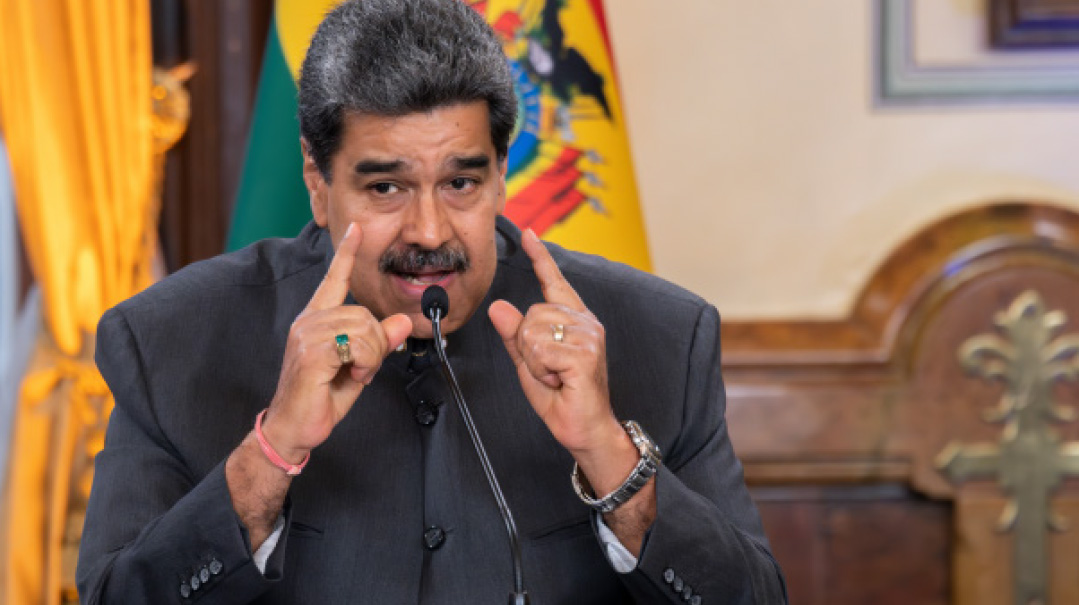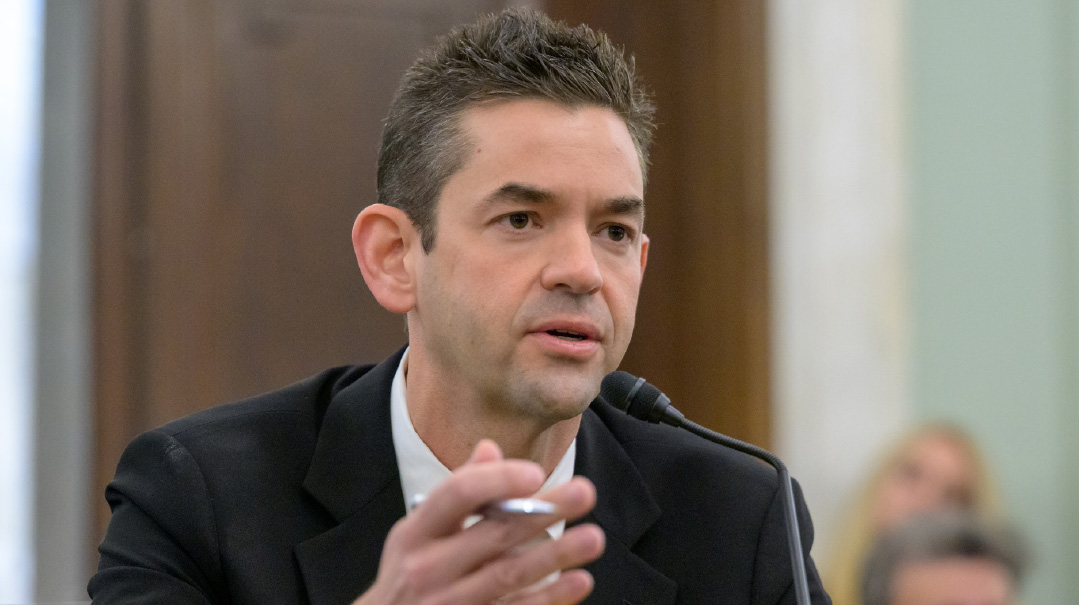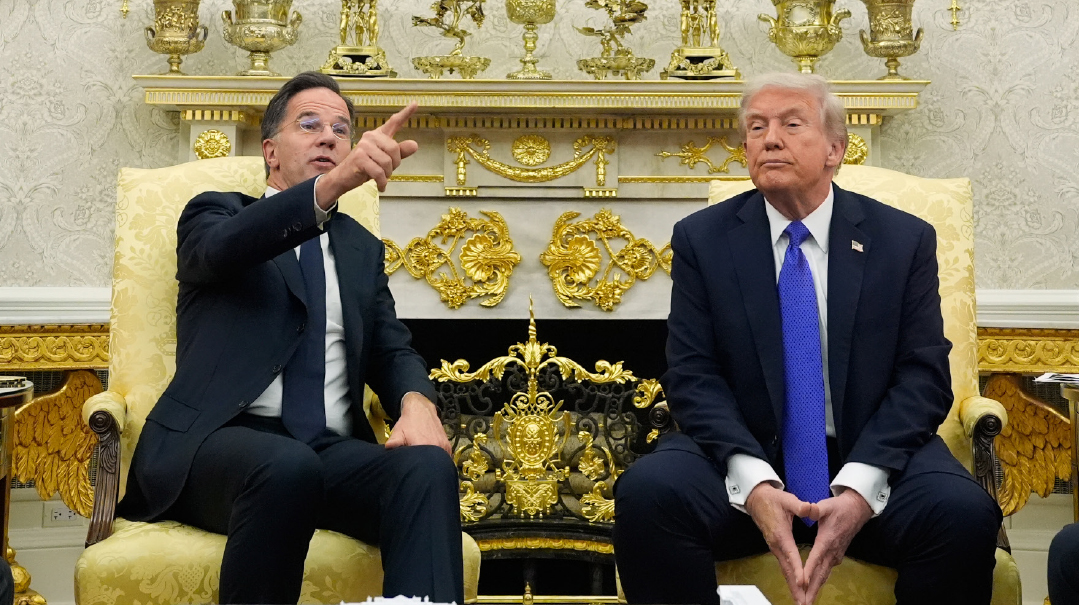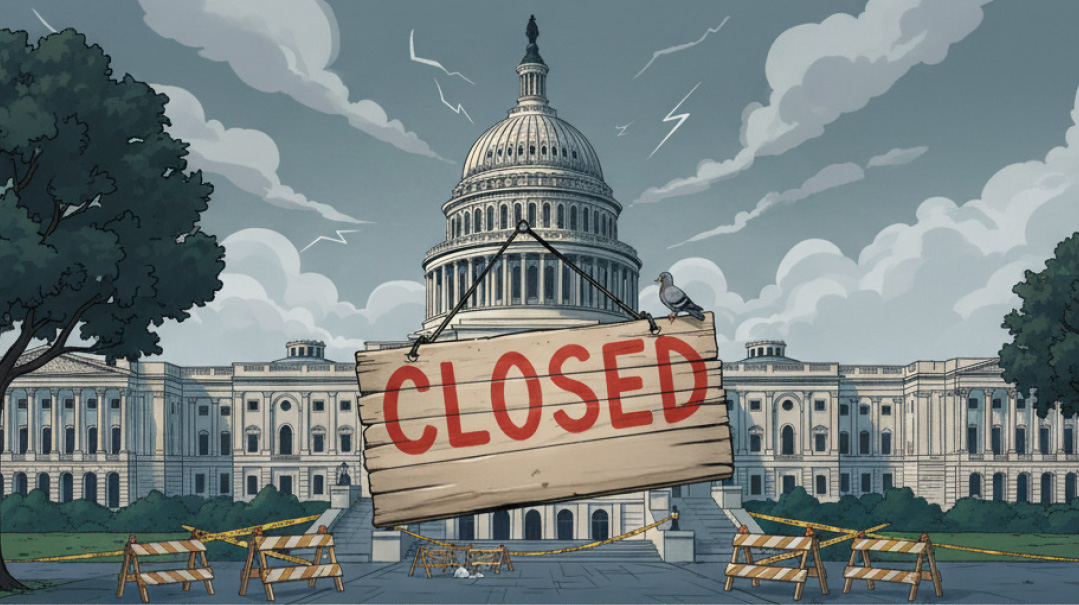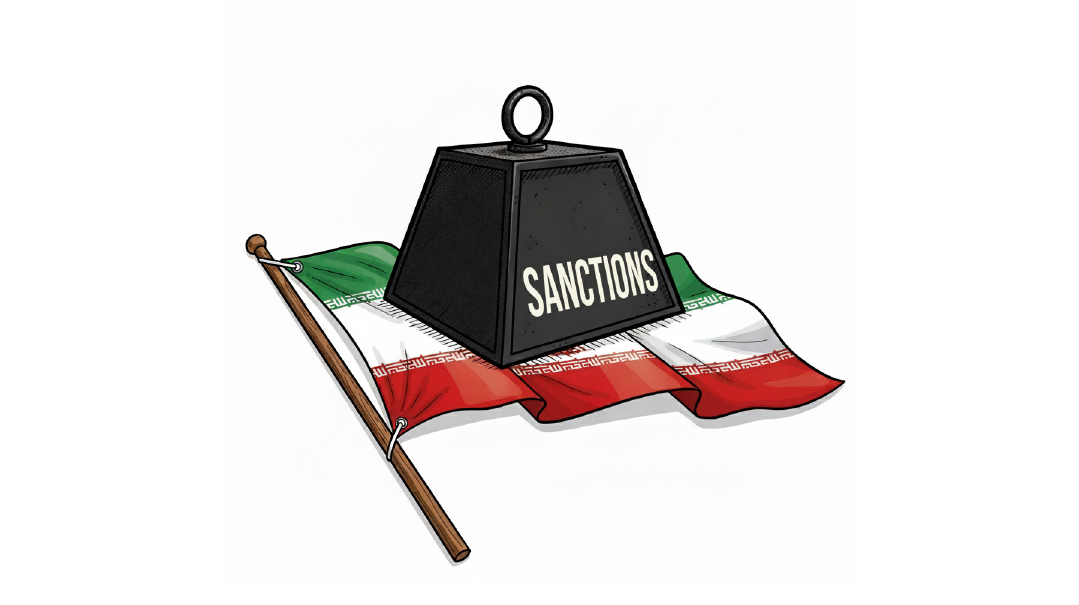The Shtreimel Steals the Show
| April 29, 2025I stood out like a Hasidic Waldo in a police lineup, completely unprepared for the selfie storm requests awaiting me
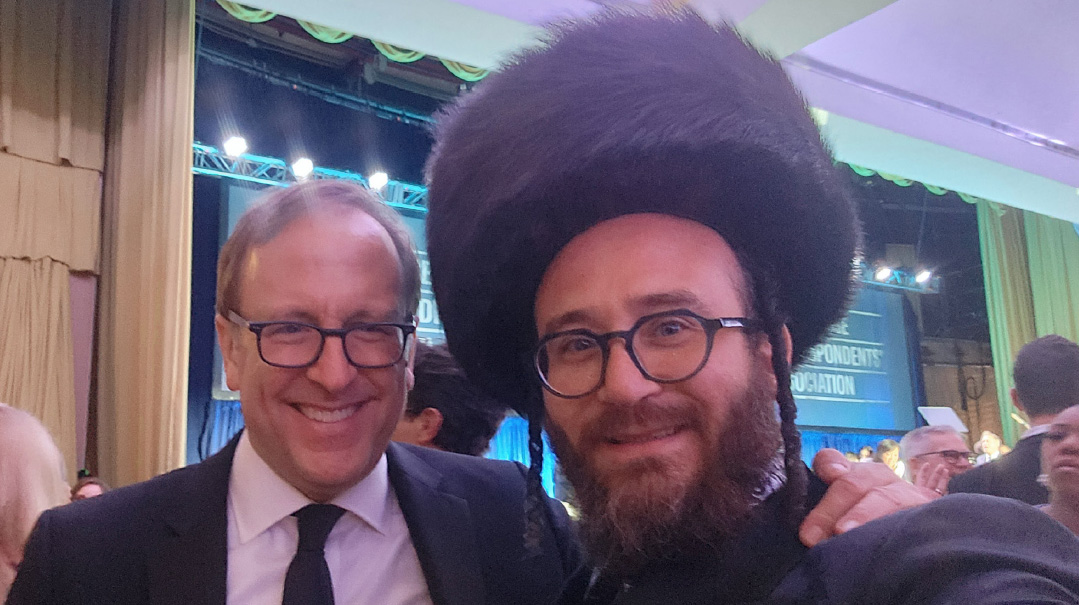
They say timing is everything. That, and knowing how to wear a shtreimel with enough swagger to steal the show.
Before we get to the main event, the 2025 White House Correspondents’ Association Dinner, let’s start with Shabbos that lead into it.
Friday night, I found myself at Washington’s Chabad-Lubavitch shul, situated conveniently — providentially, if anything — directly across the street from the Washington Hilton, where the White House Correspondents’ Association annual dinner is traditionally held. Rabbi Eli Shemtov and his wife graciously added me and my dinner guests to their Young Jewish Professionals Shabbos meal, a gathering of Washington’s best and brightest, with a list even more exclusive than the VIP list for the WHCA dinner. From college students to senior White House officials, lawyers, journalists, and yes, even a few gentlemen claiming to follow in their “family tradition manufacturing corks for wine bottles” (a clever euphemism that turned out to mean “active military personnel who don’t feel comfortable introducing themselves thusly”).
During the meal, each of the 70 participants stood up to give an introduction and share a highlight from their week. Highlights ranged from tasks completed, to meetings arranged, classes aced, and anti-Semites outwitted. My personal highlight? Finishing a landscaping project with my 11-year-old son [applaud here]. My highlight from the dinner itself was bumping into Avi Furman (shout-out!), one of my campers at Camp Machane Yehuda, whom I hadn’t seen in 2.5 decades.
Rabbi Levi Shemtov, the shul’s senior rabbi, was away that evening running a college campus program, leaving Rabbi Eli to oversee the proceedings. By Shabbos morning, Rabbi Levi was back at the helm.
The WHCA dinner itself starts just as Shabbos as about to end, but the festivities get underway well before that. And having a dinner ticket is no guarantee of getting into any of the many exclusive receptions and after parties. And so, my traditional WHCA dinner routine involves booking a first-floor room at the Hilton and spending Shabbos afternoon mingling among the high-security reception areas.
Dressed in full Shabbos regalia — shtreimel, beketshe, and my “Bekeshirt” (a shirt that’s styled after rebbishe beketshes, it’s clever, I invented it), I’d slip into these reception hotspots while they were still setting up. I’d casually wander about, inspecting cabinets, pretending to read wine labels and chatting up the staff. My look, so wildly out of place, usually led people to assume I was the rabbi assigned to bless the food or something. No questions asked.
But this year, in a radical departure from tradition, I opted for a Shabbos nap instead. I’m nearing 40; don’t judge. Which meant that when I groggily made my way downstairs via one of the side staircases toward the first row of receptions, I stood out like a Hasidic Waldo in a police lineup, completely unprepared for the selfie storm requests awaiting me.
Caught off guard, I improvised: “We’ll take selfies later,” I assured anyone who stopped me. When asked how they would find me, my stock answer was, “I’ll be the guy with the big furry hat” which got me a chuckle and a clear path.
Jeffrey Goldberg, editor-in-chief of the Atlantic, approached and said, “You know, my wife told me she saw someone wearing a shtreimel.”
I congratulated him for being the first person all night to correctly identify it by name. As a prize, I let him stroke it.
Trying to escape the crowd, I was stopped again by a Portuguese fashion photographer. I politely explained that I wasn’t trying to make a fashion statement; the shtreimel was my crown for Shabbos. Just then, controversial TV host and short-lived presidential candidate Cenk Uygur stepped in to bail me out, vouching that “this is just how Jake rolls on his Shabbos.”
I reminded Cenk of our first conversation nearly a decade ago, when he had asked why some Jews wore the furry hats and why I wasn’t wearing mine. I had told him, “It’s a special crown we wear on the Sabbath and one day I’ll show you my shtreimel.” Well, that was the day.
Another photographer pleaded for a photo “for his Hasidic fans,” but I told him those “Hasidic fans” of his would have to wait until sundown.
Navigating past the red carpet, out the doors, beyond the police barricades and a smattering of anti-Israel protesters, I made my way across Connecticut Avenue, past a small gathering of frum spectators en route to Minchah craning to glimpse VIPs arriving on the red carpet. I filled them in on what was taking place on the other side of the barricade, and together we walked to shul where Minchah and Seudah Shlishis awaited.
After Shabbos, I returned to the Hilton — shtreimel, beketshe, and all. Why, though? Why even bother with the event in the first place? As a sign of appreciation to the White House Correspondents’ Association for defending my First Amendment rights. Also because — and this is important — I know the reporters who write those nasty, ignorant articles about Orthodox Jews. And I know they’re not important enough to get invited to this exclusive dinner. Me and my Hasidic shtreimel? We get invited. And that’s why I attend.
Todd Gillman, longtime White House reporter turned professor, asked why I was still wearing my shtreimel since Shabbos was over. I explained about Motzaei Shabbos, the lingering holiness after nightfall, and to prove the point, pulled him into a selfie.
I made it a point to wish a “gut voch” to ABC’s Jon Karl, a former WHCA president who, during his tenure, had given me written assurance that I would never face discrimination over Shabbos observance, which was actually a big deal at that time. A handshake, a thank-you, a moment of quiet triumph.
Donald Trump didn’t attend the dinner, but according to several WHCA board members, this year was the closest he ever came.
“We really felt he’d show up this time,” one board member told me. “But we knew it was over when he kicked the AP out of the press pool.”
While the night was filled with tuxedos, glitter, and the occasional awkward selfie request, the substance of the awards told a deeper story. If you read between the lines — and the punchlines — the WHCA was sending some clear messages about journalism’s role, no matter who’s in power.
In a twist that would’ve made even the trophies raise an eyebrow, the night’s biggest journalism awards went to reporters who held the Biden White House to the fire. Alex Thompson of Axios took home top honors for exposing internal worries about the president’s cognitive health. Associated Press reporters Aamer Madhani and Zeke Miller snagged an award for revealing attempts to clean up Biden’s official transcripts after appearing to refer to Trump supporters as “garbage.” And Doug Mills of the New York Times captured a photograph of Biden so heavy with symbolism it practically wept onto the page.
The WHCA made a point to show that real journalism means holding any administration accountable, even the one most of the room definitely voted for. In a moment rich with irony, the same reporters who once scorched Trump were now earning standing ovations for scrutinizing Biden, a reminder that power, not party, makes the best target. By awarding Biden-critical work, the WHCA sent a quiet but unmistakable message: After years of accusations of bias, they were reasserting their credibility. Whether or not the broader public buys it, the awards seemed carefully curated to prove that reporters are still willing to bite the hand that feeds them, Democratic hands included. It was also a night when the underlying message to future administrations was clear: We’re not just here for your cocktail parties.
As I finally made my way out of the Hilton, big furry hat still proudly perched atop my head, I carried with me a small but certain proof that sometimes, being yourself is the best credential you can wear.
And if not? Well, at least you’ll have the best hat in the room.
(Originally featured in Mishpacha, Issue 1059)
Oops! We could not locate your form.

